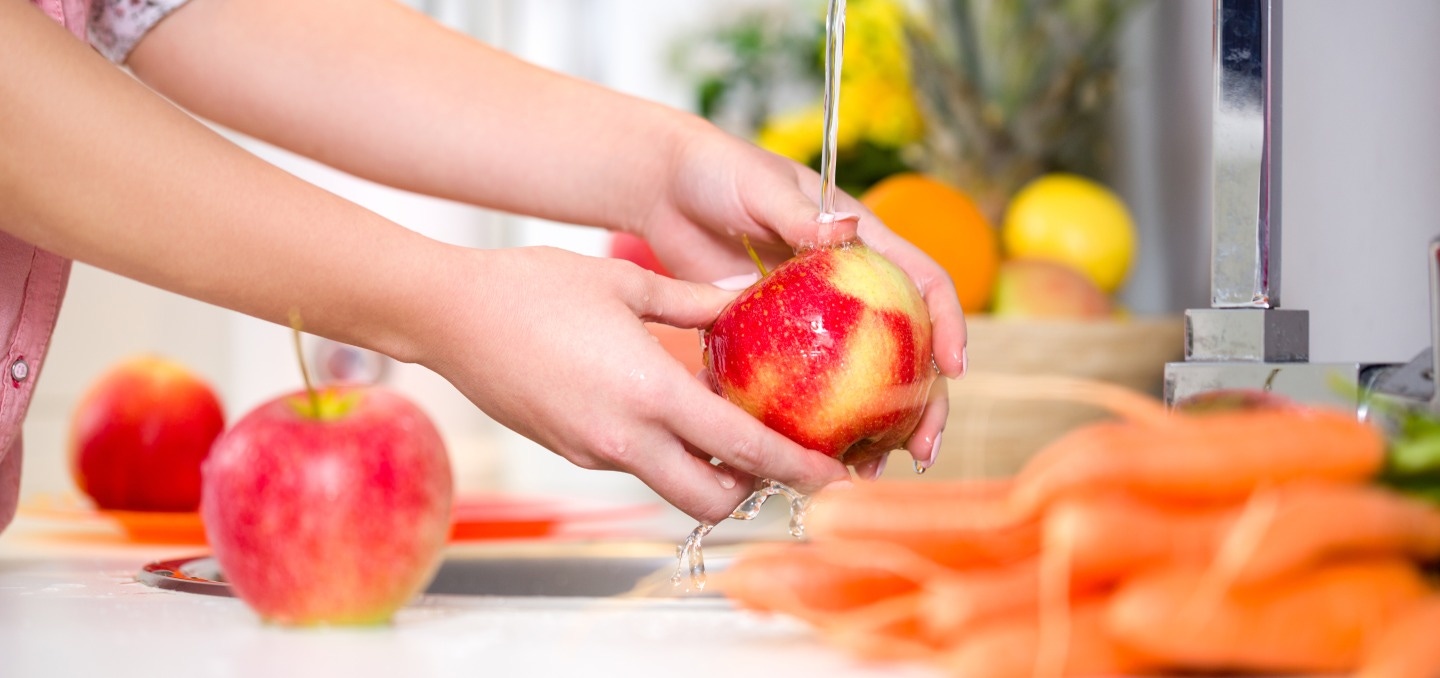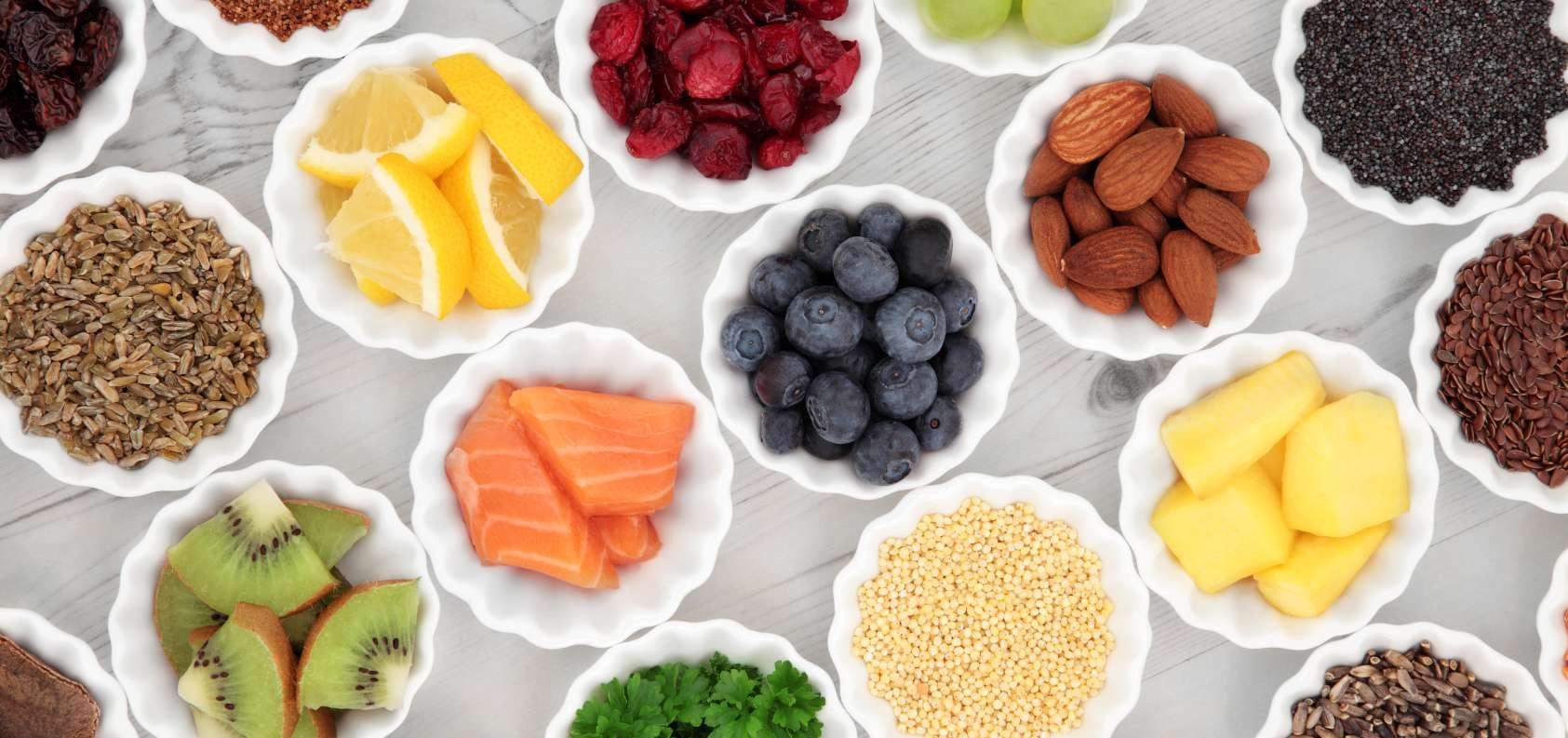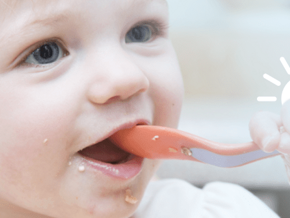
A few of these habits began when your toddler was a newborn (such as tummy time and frequent night feedings) and may not be part of your everyday routine now. Other habits may need some practice with your 18-24 month old. And if you are thinking about (or expecting) another baby, all these healthy habits may serve as a good review.

1.Breastfeed your baby, if possible
Breast milk is baby’s first superfood. It is complete nutrition that changes to match their growth and development, providing all the energy and nutrients they need for the first six months of life. Health Canada recommends exclusive breastfeeding for the first six months is the best way to feed your baby and should continue, alongside complementary food, up to the age of two or beyond.
Keep it up: As well as being a special bonding time for you and your child, continued breastfeeding promotes healthy growth. It protects against common childhood illnesses and may bring longer-term health benefits, such as reducing the risk of your toddler becoming overweight when she gets older. There's no reason to stop breastfeeding if it’s still working for you both—continue reaping the benefits for as long as it feels right.

2.Make physical activity part of her daily routine
Teaching your baby to be physically active starts almost as soon as they’re born! Begin with a few minutes of “tummy time”—when they lie on their stomach and lifttheir head—and build up to a total of one hour a day (broken into several small segments) by the time they’re two months old. Some countries have guidelines on how much activity babies and toddlers should be doing. By six months, it’s at least 90 minutes of daily activity, and might include sitting games that strengthen their core, such as pat-a-cake, or exercises that work their leg muscles, like bouncing them on your knees. Between the ages of one and two, it’s up to three hours a day. This should include structured play, led by an adult, and unstructured play, when your little one can play freely.
Keep it up: Encouraging your toddler to engage in physical activity every day helps build their strength and motor skills, as well as kickstarting healthy habits that may last a lifetime.

3.Help her to get enough sleep
Night wakings are normal for newborn babies as they have tiny tummies and need to feed frequently. Guidelines for newborns recommend a total of 14-17 hours’ sleep (including naps) each day. By three months of age, many babies could be sleeping for five hours at a time. For four- to 11-month-olds, the advice is 12-15 hours’ total sleep a day, and by their “half birthday”, some babies may be able to sleep through the night. Putting them to bed when they’re drowsy, but still awake, can help them learn how to fall asleep by themself when they’re a baby.
Keep it up: Adequate sleep is needed for healthy growth and development. Guidelines recommend that toddlers aged between one and two get 11-14 hours’ total sleep each day. Encouraging “good sleep habits”, such as regular, early bedtimes, and a consistent bedtime routine—for example, bath, pajamas, teeth, and story—when they are a toddler, may lead to better sleep habits through childhood.

4.Introduce the right foods at the right time
At around six months old, your baby will need some additional nutrients, on top of those provided by breast milk and/or infant formula. Giving them a taste of different vegetables and fruits during the first few weeks of introducing solid foods, and lumpy textures before nine or 10 months, means they’re more likely to accept them in the future.
Keep it up: Serving a variety of nutritious foods, flavours, and textures can help shape your little one’s tastes when they’re older. As they gradually move on to the same family foods as you, it’s an opportunity for the whole family to enjoy an adventure in healthy eating together.

5.Prepare food safely
Your baby has a less developed immune system than you, so is more vulnerable to food-borne illnesses. That’s why it’s important to take extra care when preparing, storing, and heating food for your little one. If you’re buying from a store, read the ingredients list to make sure the food is appropriate for your baby’s age and remember to check the “best before” date.
Keep it up: Following basic hygiene rules, such as washing your hands before preparing food and after touching raw meat, will set a good example to your toddler as they grow up and help to protect the whole family from illness. Continue to check food labels to ensure the food you offer is as nutritious as possible.

6.Don’t forget water
When your baby reaches six to eight months old, you can start to introduce a cup. Offer a small cup of water at meals and snack times to help them learn how to drink from a cup. Remember to offer refreshing water during and after play sessions as your toddler gets more active.
Keep it up: There’s no room in your little one’s tummy for sugary drinks—these increase their risk of tooth decay and becoming overweight when they’re older. Learning to like water now may make them more inclined to prefer it as a drink of choice in the future. Be a good role model and drink water at every meal and they’ll likely do the same.

7.Encourage healthy snacking
Your baby’s tummy is small, so they need to eat more often than you. Frequent offerings is the key—typically three main meals and two snacks or “mini meals” a day. As they get close to two years old, three meals and one snack may be adequate. There is no room on the menu for high-calorie, low-nutrient foods. Each mouthful matters, so rethink snacks as healthy essentials.
Keep it up: When your toddler becomes a pre-schooler, they’re still likely to be super active and have lots of energy! Continue to treat “mini meals” as an opportunity to provide them with all the nutrients they need as they get older. Remember to offer a variety of healthy foods from all the five groups—fruits, vegetables, protein foods, grains, and dairy—for a balanced diet.

8.Practice responsive feeding
Responsive feeding is as much about how you offer food as what you offer. It means offering a variety of healthy foods at regular meal and snack times, and letting your baby decide what and how much of these foods they want to eat. Look out for signs that they’re hungry or full—for example, grabbing or turning their head away as an infant, and words and gestures as a toddler. Mealtimes should be fun, sociable occasions for all the family, without pressure or over-encouragement.
Keep it up: As your toddler gets better at communicating, they’ll be able to tell you when they’ve had enough or want more food. Respecting their hunger and fullness cues is essential in establishing healthy eating habits for life.

9.Watch out for any gaps or excesses in nutrition
As your toddler is eating more food, and drinking less milk compared to when they were an infant, they may miss out on key nutrients. Every bite counts, especially when they’re young, so make sure each meal you offer is packed full of nutritional goodness.
Keep it up: By providing a healthy, balanced diet for your toddler now, you are helping to lay the foundations for their future eating habits. As a minimum, this means offering foods from each of the food groups, including fruits and vegetables, and foods with healthy fats, iron, and vitamin D, as well as foods without added salt and sugar.

10.Ensure your own diet is rich in nutrients
In just five days of breastfeeding, you can burn about the same number of calories as it takes to run a marathon! That’s why it’s important to eat a balanced, nutrient-rich diet, with about 400 additional calories than you’d normally consume. As you start complementary feeding with your baby and then start to introduce family foods to your toddler, make sure you include foods from all five food groups— fruits, vegetables, protein foods, grains, and dairy—in your own diet, and drink plenty of water. Getting into the habit of eating healthily will make you a positive role model and encourage your little one to do the same.
Keep it up: Thinking about a second baby? A nutrient-rich diet is equally important during pregnancy. As well as the key vitamins and minerals you get from food, you might want to take a prenatal multivitamin providing at least 400 mcg of folic acid. This helps reduce the risk of neural tube defects and is necessary early on in pregnancy—before you might know you’ve conceived.
Sources
American Academy of Pediatrics. Back to sleep, tummy to play. 2011
Black MM, Aboud FE. Responsive feeding is embedded in a theoretical framework of responsive parenting. J Nutr 2011; 141(3): 490-4.
Coulthard H, Harris G, Emmett P. Delayed introduction of lumpy foods to children during the complementary feeding period affects child’s food acceptance and feeding at 7 years of age. Matern Child Nutr 2009; 5(1)75-85.
Dattilo AM Programming long-term health: Effect of parent feeding approaches on long-term diet and eating patterns. In: Early nutrition and long- term health, mechanisms, consequences and opportunities. Ed., Saavedra and Dattilo, Elsevier, 2017: 471-95.
Duyff, RL (2017). Academy of Nutrition and Dietetics. Complete food and nutrition guide (5th ed.). Boston, MA: Houghton Mifflin Harcourt.
Grimm KA, Kim SA, Yaroch AL et al. Fruit and vegetable intake during infancy and early childhood. Pediatrics 2014; 134 Suppl 1:S63-9. doi: 10.1542/peds.2014-0646K.
Hirshkowitz M, Whiton K, Albert SM, et al. National Sleep Foundation’s sleep time duration recommendations: methodology and results summary. Sleep Health 2015; 1(1):40-43.
Institute of Medicine Food & Nutrition Board 2006. Dietary Reference Intake: The Essential Guide to Nutrient Requirements. In: Otten, J.J., Hellwig, J.P. & Meyers, L.D. (eds.). Washington, D.C.: National Academy of Sciences.
Jequier E, Constant F. Water as an essential nutrient: the physiological basis of hydration. Eur J Clin Nutr 2010; 64(2):115-23.
Mindell JA, Williamson AA. Benefits of a bedtime routine in young children: Sleep, development, and beyond. Sleep Med Rev 2018; 40:93-108.
Nicklaus S. Complementary feeding strategies to facilitate acceptance of fruits and vegetables: A narrative review of the literature. Int J Environ Res Public Health 2016; 13(11): 1160; doi: 10.3390/ijerph13111160.
Okely AD, Ghersi D, Hesketh KD, et al. A collaborative approach to adopting/adapting guidelines – The Australian 24-hour movement guidelines for the early years (birth to 5 years): an integration of physical activity, sedentary behavior, and sleep. BMC Public Health 2017; 17(Supple 5):869. doi: 10.1186/s12889-017-4867-6.
Pan L, Li R, Park, S et al. A longitudinal analysis of sugar-sweetened beverage intake in infancy and obesity at 6 years. Pediatrics 2014; 134(Suppl 1): S29-35.
Park S, Lin M, Onufrak S, et al. Association of sugar-sweetened beverage intake during infancy with dental caries in 6-year-olds. Clin Nutr Res 2015; 4(1):9-17.
Perez-Escamilla R, Segura-Perez S, Lott M, on behalf of the RWJF HER Expert Panel on Best Practices for Promoting Healthy Nutrition, Feeding Patterns, and Weight Status for Infants and Toddlers from Birth to 24 Months. Feeding Guidelines for Infants and Young Toddlers: A Responsive Parenting Approach. Durham, NC: Healthy Eating Research, 2017. Available at: http://healthyeatingresearch.org
Shelov SP & Altmann TR (Eds.). (2009). American Academy of Pediatrics. The complete and authoritative guide Caring for your baby and young child birth to age 5 (5th ed.). USA: Bantam Books.
Society of Health and Physical Educators (SHAPE). Active start: A statement of physical activity guidelines for children from birth to age 5. 2nd ed. Reston, VA: SHAPE America; 2009. Available at: https://www.shapeamerica.org/standards/guidelines/activestart.aspx (Accessed April 11 2018)
Tremblay MS, Chaput J, Adamo KB, et al. Canadian 24-hour Movement Guidelines for the Early Years (0-4 years): An integration of physical activity, sedentary behaviour, and sleep. BMC Public Health 2017; 17(Suppl 5):874 doi 10.1186/s12889-017-4859-6.
World Health Organization. Infant and young child feeding: Model chapter for textbooks for medical students and allied health professionals. Geneva, World Health Organization, 2009.
https://www.fsis.usda.gov/wps/portal/fsis/topics/food-safety-education/…- answers/food-safety-fact-sheets/safe-food-handling/leftovers-and-food-safety (Accessed December 5 2018)





















